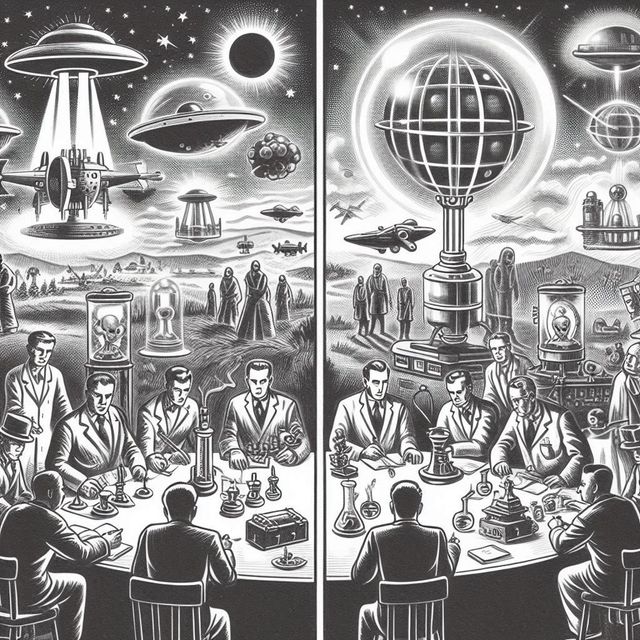-
Vijay Fafat
- Published on
In some far future, after “the Asians had obliterated themselves with a dazzling atomic mistake”, former allies, Ambrija and Russia, found themselves as cold-war opponents once again, in a race for a super-weapon, with an embargo on atomic weapons in place.
Much of Ambrija was already socialized, except for some industries. There were 2 major defense-industry companies, GenProd and Unipower, and one was to be selected to develop an “Effect machine”, one that could affect matter at a distance, at the cost of 20% of GNP. Now, many years ago, an eccentric genius called “Kishlar” had shown how to manipulate matter on a limited scale, but his research had fallen into obscurity. Jack was an inventor who believed he could make Kishlar’s discoveries implemented practically. As he explained to his friend, Charlie, the narrator:
“Remember Kishlar’s premise?” He pointed. “Saturate any space with three-dimensional radiation and you can sense the position of any particle of matter therein.”
“Sure. That much is a proven fact. Three coordinates will locate anything anywhere.”
“Well, Kishlar also integrated the information coordinates with respect to frequency.” Jack’s eyes were aglow as he turned the page.
“True,” I answered. “Theoretically he could not only sense position but create position, if those integrals were determinate and the equations solved. But they’re not, they’re indeterminate, or so everybody says. I can’t solve ’em, anyway. Don’t tell me you’ve managed?”
“Not analytically. But in general what’s the accepted approach to an indeterminate equation?” he asked.
“Trial and error. But Jack, we’ve T-and-E’d Kishlar’s equations to death and … ”
“Digitally, yes. Empirically, no. I’ll bet you programmed your trials without even once getting down to grit and trying to build anything. But I did.”
“But, good grief, Jack. That’s working a ten-variable matrix on seven equations! There’re over a million ways you could set something up and get it wrong!”
“Ah, yes,” he sighed. “A million possible solutions, but I was lucky and hit the right one after two hundred thousand or so.”
So then Jack showed Charlie the device which would make all of it work (something I had a hard time understanding):
“D’you know what a Klein bottle is?” he cut in.
“Of course.” I was piqued and to rub him back a bit I recited a theorem from one of the better known topology texts: “A Klein bottle is an imperfect surface so convoluted that it is exposed to both its own contained volume and the surrounding space. This .. . ”
“Enough.” Jack held up his hand. “If that one surface sees both the external and internal volume, who’s to say which is contained and which is expelled?”
“I don’t quite see… . ” But I was beginning to. Jack wagged a finger.
“Does a one gallon Klein bottle contain one gallon separate from the universe? Or does it merely expel one gallon from the universe which it contains/”
We were nose to nose again. “My God,” Jack shouted. “If we shaped an antenna like a Klein bottle, all the emitted radiation would be self-shielded!”
[…]
Jack and I fabricated a Klein bottle antenna about the size of a basket ball in his cluttered bedroom. Have you ever seen a Klein bottle? It might most easily be described as a “goosed goose.” Suppose a goose tucks his head under a wing, and for the sake of better else to do, chews a hole through his ribs into his belly. He finds it a bit dark and heads for the first glimmer of light he sees. You know where that is. When the goose’s head merges from his anus, that goose is a Klein bottle. (Always assuming his mouth is open.)
So the race was on to build the Effect Machine. Somehow, both countries knew the secret, and in a mad arms race, each nation went bankrupt in building the said machine. Only, the machine did not work, Jack and his counterpart working with the Russians turned out to be aliens who wanted humanity to stop warring - and what better way to just bankrupt them and leave them just with existential issues, not weapons? The Klein bottles were gigantic hoaxes… literally.
